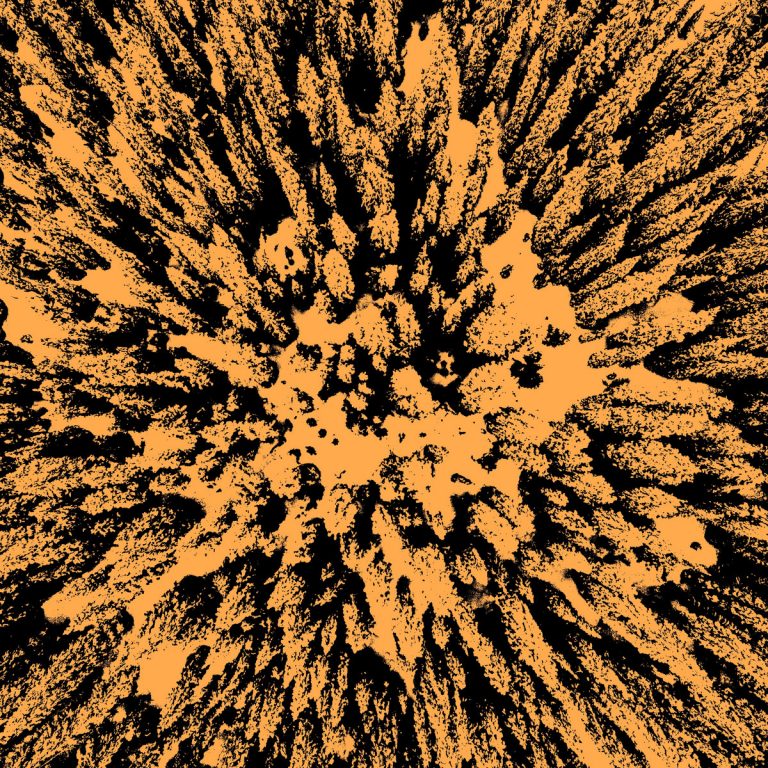Do you hear that? The hum of electricity pylons? The seemingly silent passing of radio waves through the air? The quiet electric buzz of a recording studio full of equipment? If you can, then congratulations on your excellent hearing/probably being a dog. If not, don’t worry, because Ben Chatwin has you covered. The new album from the Edinburgh-based experimental/ambient/noise musician, The Hum, seeks to bring those noises to the surface. “There are so many sounds around us that are lower and higher than we can hear. I wanted to make it all audible,” Chatwin says.
Don’t be fooled into thinking that The Hum is a quiet album though. The source material might be literally quiet noises murmuring around and below the 50Hz frequency range (or beyond the higher register of our human hearing range), but Chatwin weaves them all together to create sweeping movements of buzzing noise music that is full of detail and layers. “Transistor” sounds like the muffled beats of industrial club music through a concrete wall, and “Creep Strain” shimmers with ghostly, galvanized voices swirling around fizzing groans of noise, like an apocalyptic take on Brian Eno’s Ambient 4: On Land album. At its best, this is ambient music that can be impossible not to get sucked into and engage with. Sounds come and go between strands of melody formed out of the dissonance before your eardrums get swallowed trying to follow a sound to its end.
There’s a notable difference in the tone of Chatwin’s music too, and that feels down to his analogue approach. Mixed live and recorded to tape, Chatwin wanted to avoid using computers to create the sounds on the album. The result is something that feels both more physical and alive than with previous albums, but still overwhelmingly electronic; there’s a pulsating heart to it, but it sounds like the murmur of electricity passing through wires as opposed to an organic entity. There are also moments when Chatwin fuses together the human and machine elements with sublime delicacy. On the patiently paced “War of the Ants” the cinematic strings press up against metallic drones, making for surprisingly beautiful harmonic moments. Elsewhere, on the final track “Ghost in the Machine”, the strings emerge hauntingly out of the gloopy, glistening synths, making for what sounds like a heavy end credits sequence to a film that’s not far off Max Richter’s soundtrack work. (It also feels like Chatwin is carrying forward the string-focused work from the 2018 duo of albums Drone Signals and Staccato Signals.)
At its best, The Hum is a full, darkly vibrant album to get absorbed in. “Snow Crash” fits its title as it conjures up images of making your way through a dark blizzard with your vision impaired and everything freezing. “Transmission” and “Interference” sound like frayed electrical wires whipping about on wet floors, the former full of detailed noise that sounds like a tape rewinding too quickly so as to create the image of travelling at light speed.
On the B-side of the album, distorted, muffled voices come and go. They may well be ancient shipping forecasts speaking out to an empty ocean, or just general radio chatter, but amidst the darker corners of the albums it sounds like EVP. Put the album on with good headphones at night, and the haunting air and hidden noises and voices only seem to stand out more.
Chatwin also has an extremely good ear for knowing when to fill the landscape and to strip away layers. Aforementioned “Transistor” and “Creep Strain” are full, deep cuts, but on “War of the Ants” it feels like we are hearing the creation process in real time. Beginning on a repeated tape loop of what sounds like the metallic bellow of trains in the far-off distance (evoking the early works of Pierre Schaeffer and the musique concrète movement), simmering broken synth arpeggios emerge before the distant swell of strings and the thrum of metallic noise come into view. It feels like everything at once: alive, mechanical, real, and like some ghostly apparition.
The only time the album really stumbles is on the title track, where one’s attention could wane if not entirely invested. If anything, this feels like it’s because it uses the same elements and movements as with the surrounding tracks (electrical flickers, molasses-like synths, distorted metallic drones), but it’s still an engaging sound world to explore or have on as ambient music to fill the air in a room. And when consuming The Hum as a whole it doesn’t really matter, as the record (at an economic 37 minutes) takes you in, sweeping you up in waves of noise only to release you gently on the low yawp of bassy synths at the very end. Chatwin is a deft hand at weaving melody, mood, texture, and atmosphere into deep, involving paintings you could spend hours staring at.
The Hum is no different, and just as fine a listen as anything else in his consistently strong discography (under his own name or his Talvihorros moniker) – it even stands out that bit more because of its vibrant, deep, electrical tone and unique approach. As ever, there’s so much detail to take in – more so than ever as one strains to listen for noises buried in the mix. Is that the faraway thrum of a power plant you hear? Or a ghostly voice haunting the music throughout? That’s for your ears to determine. All you have to do is listen.

